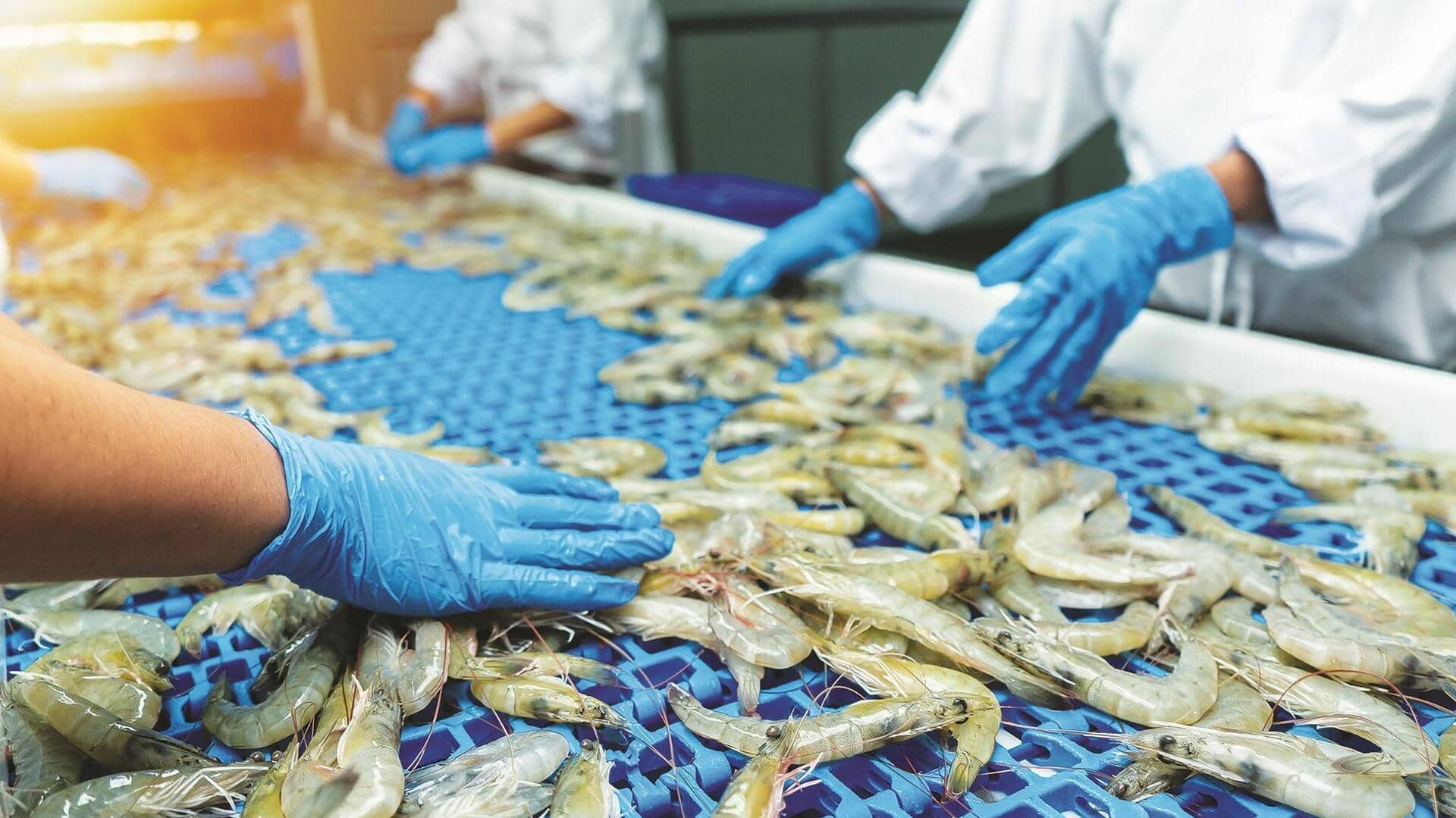
How Trump's tariffs are threatening India's seafood industry
What's the story
Indian seafood exporters are facing a major crisis after US President Donald Trump slapped a 25% reciprocal tariff on Indian goods in early August. The move was prompted by concerns over trade imbalances and anti-dumping practices. The situation worsened on August 27, when another 25% was imposed as a penalty for India's purchase of Russian energy, taking the total tariff burden to 50%.
Market impact
US is India's largest seafood export market
The US is the largest market for Indian seafood exports, accounting for a whopping one-third of the total. In 2024-25, India exported 1,698,170 tons of seafood worth ₹62,408.45 crore ($7.45 billion). The US alone accounted for $2.71 billion of these exports, an increase from $2.55 billion in 2023-24, making it India's top seafood market ahead of China ($1.27 billion), the European Union ($1.12 billion), and Southeast Asia ($974.99 million).
Duty increase
Effective duties on Indian seafood exports to the US
The recent tariffs have raised the effective duties on India's seafood exports to the US to a staggering 59.71%. This includes 5.76% countervailing duties and 3.96% anti-dumping duties. Experts say this sudden spike in total duties, from some 10% to nearly 60%, is rendering seafood exports to the US unviable.
Export strain
Early signs of strain are already showing
Just over a month since the 50% tariff came into force, early signs of strain are already showing. These include slower shipments, supply chain disruptions, and rising financial pressure. Alex K. Ninan, Vice President of the Seafood Exporters Association of India (SEAI), said they haven't fully assessed these potential losses as they're still evaluating the impact of what they have incurred so far.
Export decline
Processing units shutting down in Andhra Pradesh
Industry sources have reported a year-on-year (YoY) decline of 30-35% in seafood exports for September 2025. This has led many processing units in Andhra Pradesh, India's largest shrimp-producing state, to shut down operations. "Demand from agents who used to export to the US has dried up," Pushan Sharma, Director at Crisil Intelligence, told ET.
Diversification hurdles
Market diversification efforts underway, but not easy
After Trump's tariff announcement, the Indian government has been aggressively pushing for market diversification. However, exporters and experts say this process is neither simple nor quick. "Processed and frozen seafood typically has a shelf life of around two years," Ninan said, adding that this clearly underscores the need to explore alternative markets.
Compliance issues
Compliance with quarantine regulations a major challenge
Compliance with quarantine regulations is a major challenge due to the wide variation in requirements across regions. Rajen Padhi, Commercial Director of Bhubaneswar-based B-One Business House, a leading seafood exporter, said one of the biggest hurdles is meeting microbiological standards, which vary widely depending on external temperature conditions.